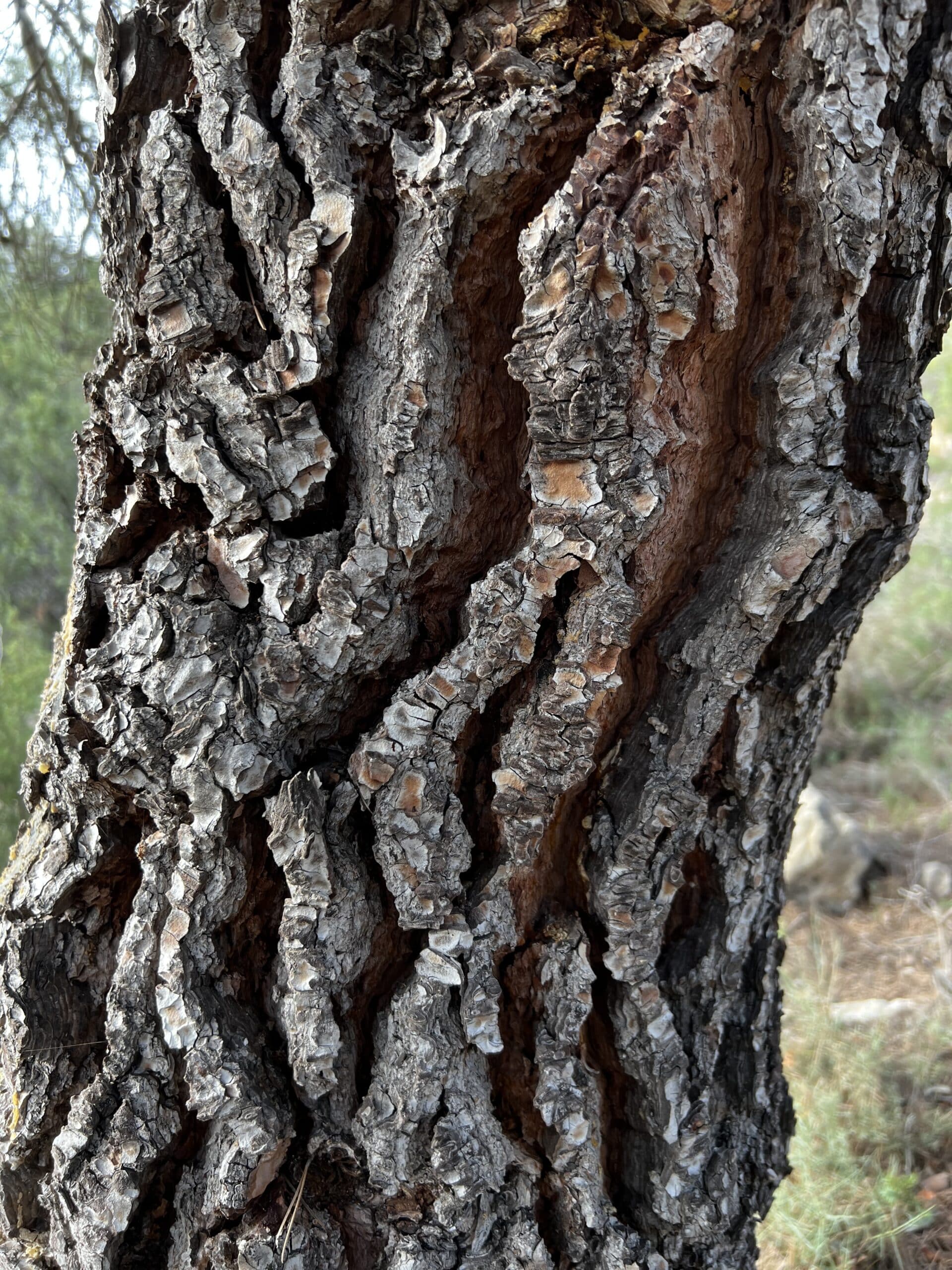
Mediterranean forest and fire
31/10/2022
Ana María Pujante Mora
In the Mediterranean, fire has been a recurrent element throughout history. The Mediterranean climate, with high temperatures, scarcity of water, dry winds, and frequent heat waves, determines the presence of a forest with a large amount of wood available for burning. In addition, the depopulation of the rural world and changes in traditional land use also increase this availability.
The most devastating fires occur in the summer months. According to the AEMET, the summer of 2022 holds the record for being the hottest since records began (1961). These extreme conditions have meant that fires have burned more than 293,155 hectares in our country so far this year.
In the Valencian Community it was in August when fires broke out in Bejís, Vall d’Ebo and Venta del Moro, devastating more than 34,000 hectares of Mediterranean forest. Our municipality has not been spared either, at the beginning of July the Mompedroso fire, caused by a lightning strike, devastated about 8 hectares.


According to the report “Analysis of the causes of forest fires in the Valencian Community. Period 2009-2018“, the most frequent causes of fires are intentional fires, negligence and accidents and natural causes (lightning). The following graph shows the percentage of each of them for the period analysed:
Efects of forest fires
In addition to the serious damage caused by loss of human life and the substantial economic losses they cause, fires have multiple effects on ecosystems. Some of these are:
- A clear impoverishment of biodiversity, through the death of plant and animal species and the displacement of others.
- Colonisation and infestation of insects that can cause pests.
- The effect on aquifers because water does not filter into the subsoil as there are no plants to retain it.
- Waterproofing of the soil due to the layer of ash that prevents water from entering. Consequently, surface runoff increases and carries sediments that reach rivers and the sea.
- The disappearance of habitats for many animal species (birds, small mammals, insects).
- The disappearance of fungi and bacteria that interrupt the cycle of organic matter disintegration.
- The destruction of the forest generates less oxygen.
- A strong increase in carbon emissions which increases the greenhouse effect.
- Smoke reduces photosynthetic activity and damages the health of humans and animals.
- Damage to the seed bank and seedlings.
Adaptations to fire
The fact that fires have been recurrent in the Mediterranean forest throughout its history has determined the appearance of fire-tolerant species. We can assume that the Mediterranean forest is adapted to fire and that its pyrophytic vegetation has developed protection mechanisms. Among the mechanisms developed, the following stand out:
- Species with thick bark that allows them to resist recurrent low intensity fires, such as pines (Pinus spp.), holm oaks (Quercus ilex) or cork oaks (Quercus suber).
- Capacity to close the scars left by the fire, which allows the trees to survive the fire.
- Ability to resprout, either from roots or stems. Juniper (Juniperus oxycedrus) resprouts after fire because the lower part of the plant resists fire and the nutrients provided by the fire.
- Adaptations of the seeds, generally buried, which germinate with the increase in temperature due to the fire.
- The existence of the serotinous cones of some pine species, which remain closed for a long time, maintaining a seed bank in the crown. After the fire, they open and spread the seeds in the ash bed produced by the fire.
Surviving the fire
Fortunately, burned forests can be restored. In order to implement a restoration plan according to specific needs, experts identify three main lines of action: active ecosystem restoration, assistance to natural rehabilitation and no action.
t is very important to determine which actions are to be carried out after a fire, and in which areas natural regeneration is possible. Factors such as the area affected, the severity of the fire, the type of soil or the slope and orientation of the slopes must be considered. Measures should at least include emergency actions before the first rains arrive (more information in Métode issue 70).
Importance of rural territory management
The document “Strategic guidelines for forest fire management in Spain“, approved by the Sectoral Conference on the Environment on 28 July 2022 of the Ministry for Ecological Transition and the Demographic Challenge, points out the importance of rural territory management to achieve sustainability in the face of forest fires. The proposed objectives include:
- Strengthen sustainable forest management by promoting the valorisation of forestry systems.
- Support the maintenance of traditional agriculture, extensive livestock farming and forestry, collaborating in the reduction of depopulation in rural and mountain areas.
- Support the valorisation of agricultural and forestry products, such as the use of surplus forest biomass as a source of renewable energy.
- Improve the competitiveness and profitability of forestry holdings, promoting or creating identity brands.
- Support the co-responsibility of individuals through participatory management, reconciliation of interests and governance.
- Integrate forest fires into territorial planning, identifying high-risk areas as a basis for territorial planning, including them in plans for protected natural areas and considering them in urban planning.
Our forests are part of our natural and cultural heritage, even of our own Mediterranean identity. Although the fire is as natural for these forests as it’s beauty is to us, it is undeniable that human action has multiplied the frequency and intensity of forest fires. It is everyone’s duty to reduce this. We must assume that there will always be fires in our forests, but it is up to us to respect their natural cycle and contribute to minimising their damage.





